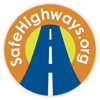State departments of transportation and toll road authorities monitor Safety Service Patrol performance to determine efficacy, and areas for improvement. From total incidents to motorist feedback and every metric in between, what do you think is most important when evaluating the performance of Safety Service Patrols? Why are these metrics critical to Safety Service Patrol administration and how often should they be evaluated?
“The most important measure of the performance of Safety Patrols, in my opinion, is whether everyone, patrollers and citizens, went home safely at the end of the day. If they did, then the performance of duties was excellent. Our biggest failure is when someone gets hurt. Our motto and goal should be that everyone goes home.”
– Mark Taylor, Safety/Training Coordinator, Dallas County Sheriff’s Department, Courtesy Patrol
“I think that first and foremost, supervisors should be evaluating operators every day, but not micromanaging.
Areas to be judged: How quickly can the SSP respond and how quickly can they remove the obstruction from the travel lanes? Best option: Remove any wrecked or stalled vehicles from the corridor. Extend courtesy service in a crash investigation site or on a secondary or arterial roadway. Secondary crashes are caused, in part, by ‘gawkers’ and our ‘D’ drivers, so the fewer reasons for ‘gawkers’ the better off we all are. Steer-It-Clear programs (without serious injury) are also exceptional. Everyone today has a camera of sorts to record location and types of vehicles involved in the crash so law enforcement needs to understand that most states have laws that allow/permit towers to remove prior to law enforcement arrival. Law enforcement is getting better, but there’s still a lot of work to be done.
Training, properly equipping, and supporting SSP operators is pretty much it and everything else will fall into place.”
– Capt. (Ret) Rory Howe, Incident Management Specialist, Parsons
“Response time and lane clearance time are what we feel are the most important performance measures. If you do not get there quickly, you cannot start to address the problem. Clearing the lanes quickly saves lives of responders and prevents secondary crashes. Response time of 15 minutes or less and a roadway clearance time that is equal to or less than the average roadway clearance time of the year prior (which, for us right now, is around 30 minutes). Ideally, each type of incident would need a different roadway clearance time measurement. For example, a disabled vehicle should take less time than a crash, and a crash with injuries or a fuel spill should take more time than a regular crash. You would also need to take into consideration the weather factors such as a rain storm or snow and ice conditions. These performance measure need to be evaluated monthly.”
– Tom Dickson, Severe Incident Response Manager, SMART SunGuide RTMC
“Monthly, the reason being that you need to look at trends in order to get a clear picture of what you are accomplishing.”
– Jeanette Rash, Operations Manager, SafeClear Management Group
“Clearance times. Quick incident clearance times reduce congestion which increases first responder and motorist safety. They should be evaluated monthly or at least quarterly.”
– Juan Hernandez, Senior ITS Project Manager, Nevada DOT Traffic Operations
